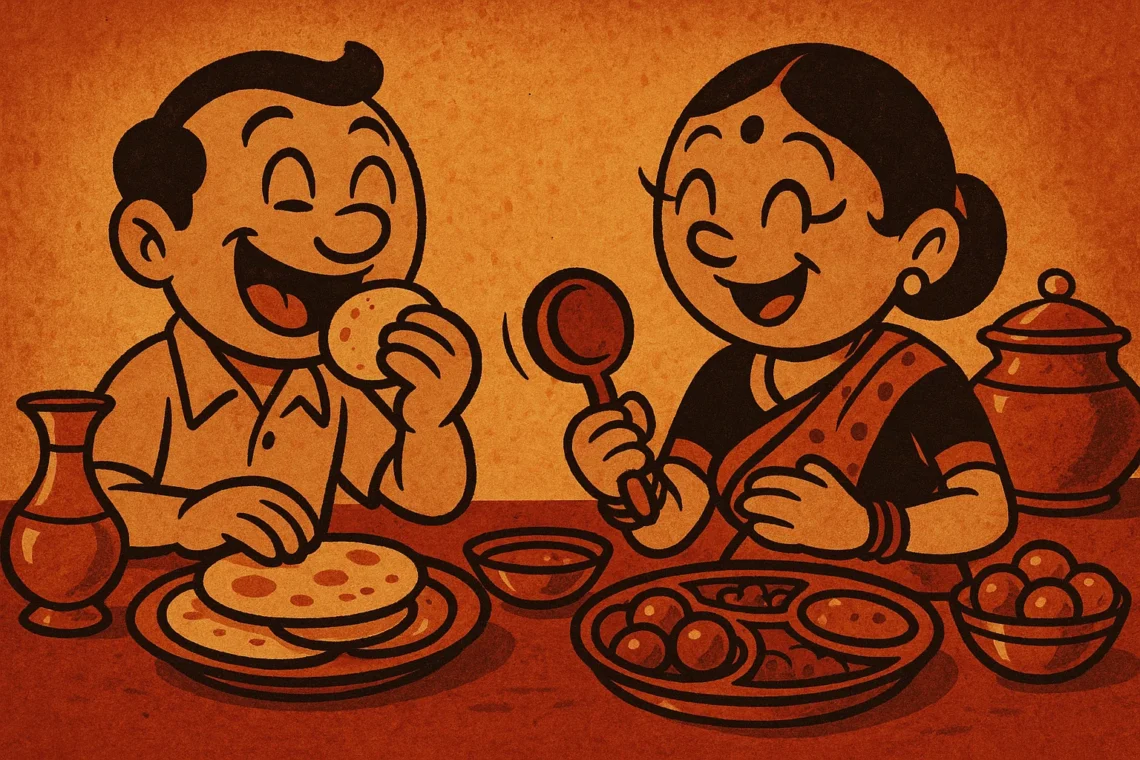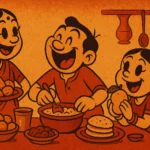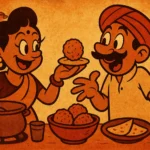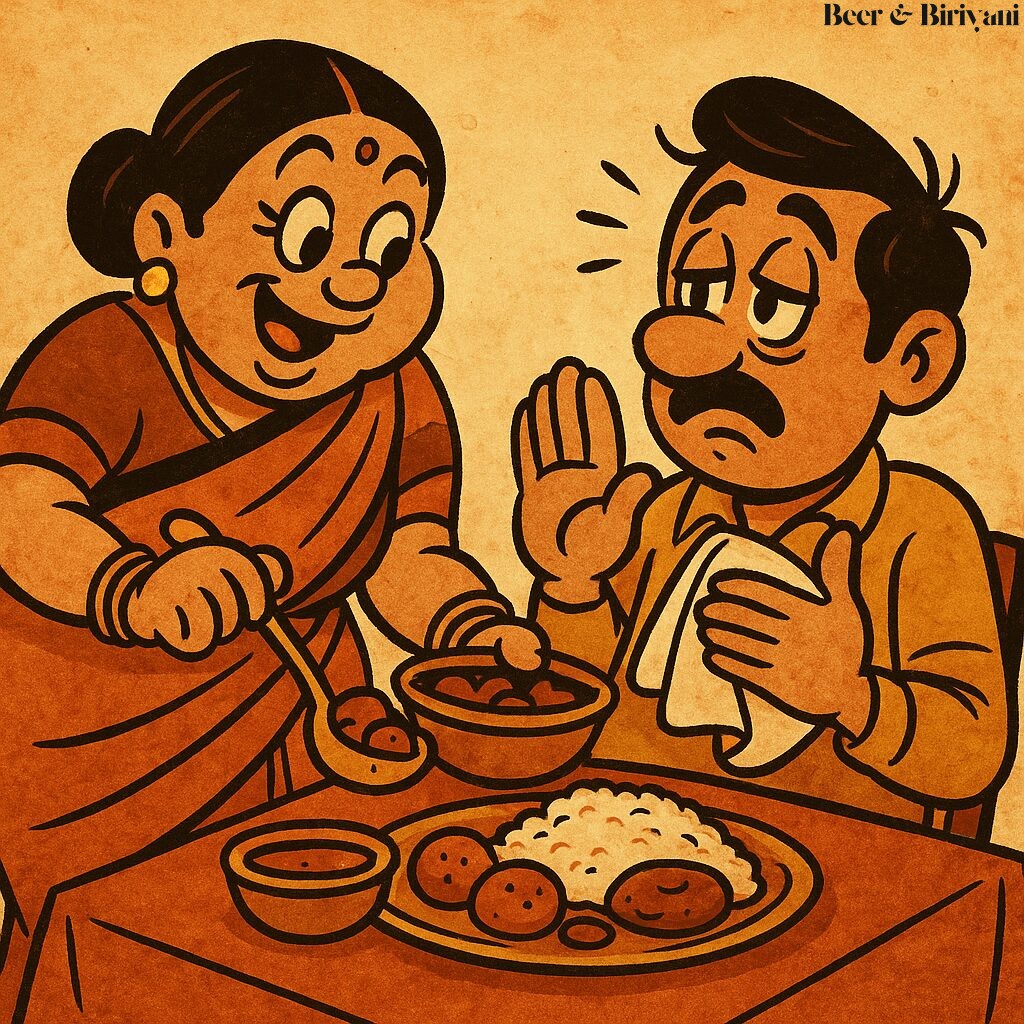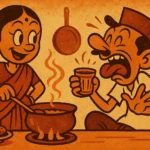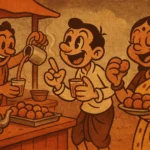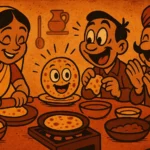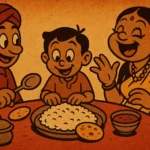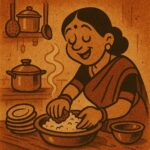We don’t call it emotional eating. Not in desi homes. We just call it dinner. Or chai. Or “Kha le, you’ll feel better.” No one uses phrases like “self-soothing through food,” but everyone knows what it means when your mom makes you dal chawal after a heartbreak, or when your dad wordlessly brings you a slice of mithai after you’ve flunked a test. Emotional eating in desi culture isn’t a problem. It’s a practice. It’s how we survive. It’s how we say things we’re too proud, too tired, or too culturally repressed to say out loud.
Sad? Have paratha. Stressed? Drink adrak chai. Heartbroken? One hot gulab jamun, please. We don’t reach for tubs of ice cream. We reach for ghee. For halwa. For khichdi with extra ghee, because today was “just one of those days.” And no one questions it. No one side-eyes your third serving of biryani. They just quietly serve more raita and ask if you want limca with that.
The Language of Feeding, Not Talking
In many desi households, emotions aren’t directly addressed. We don’t sit in circles and unpack our feelings. We offer food. That’s the gesture. You’re upset, so someone fries pakoras. You don’t have to ask. They just appear. Crispy on the outside, hot in the center, and fried in oil that now carries your name. That’s love. That’s therapy. That’s emotional eating, desi style.
And let’s be honest—half the time, you don’t even know you’re sad until someone makes you tea with extra cardamom and asks nothing of you while you sip it. That’s the magic of our kitchens. They sense what we need before we do. And the answer is almost always food.
Food That Holds You
There’s a reason comfort food looks different in our culture. It’s not just taste—it’s touch, smell, texture, temperature. Curd rice when you’re anxious. Maggi when you’re lonely. Aloo paratha with achar when the world feels like too much. These aren’t just meals—they’re companions. They don’t judge, they don’t rush. They let you cry into them. They let you sit in silence, licking haldi off your fingers, remembering who you were before the day wore you down.
And let’s not forget the midnight snacking—the biscuit dipped in chai when sleep won’t come. The spoonful of leftover kheer stolen from the fridge, standing barefoot in the kitchen. The half-roti reheated in a pan just for one last bite. These are not acts of hunger. They are small, edible hugs. Rituals of reassurance.
The Cycle of Love and Lentils
Yes, sometimes we eat our feelings. But sometimes, we also cook them. How many mothers have kneaded dough in silence after an argument? How many fathers have chopped onions a little too aggressively on bad news days? Food becomes the outlet. The apology. The gesture that says, “I can’t fix it, but I can feed you.”
Even grief has a menu. After a funeral, there’s always a meal. Simple. Pure. Rice, dal, one dry sabzi. No garlic, no onion. Food that’s not meant to excite, only to stabilize. It says: you’re still here. You still need to eat. Life goes on, even if you can’t taste it today.
We Don’t Heal Fast, But We Eat Well
There’s a reason so many of our memories are tied to taste. Because in the absence of big emotional vocabulary, we lean on our ladles. We say sorry with rasam. We say I miss you with chai. We say everything’s going to be okay with gajar halwa and a quiet nudge to take the second piece.
So yes, emotional eating is real. But in desi homes, it’s not a guilty secret. It’s a survival strategy. A family language. A way of saying what we don’t always know how to say—but always, always feel.
Born in Mumbai, now stir-frying feelings in Texas. Writes about food, memory, and the messy magic in between — mostly to stay hungry, sometimes just to stay sane.

